Some might consider it a bit mad or even crazy, but when Danish Niels Have ties full dressed, classic Jock Scott salmon flies, he ties them by the dozen... and then he fishes with them!
Niels Have is a good friend, who is a very skilled fly tier with a strong affection for classical, full dressed salmon flies. And he ties them for fishing! We have covered Niels' flies several times before, and you will find many articles and even merchandize like coffee mugs and prints with Niels' beautiful flies in them and on them.
The Jock Scott craze
One of the flies Niels ties is the Jock Scott. This is one of the best known and most popular of the full dressed salmon flies, and as a result it's also one of the most successful ones. Of course the pattern has its merits, but isn't it likely that its success comes from its popularity rather than its specific material selection and style?
To be honest, a lot of other classical salmon flies look a lot like it, and would most likely be as productive if they were equally popular and widespread.
Nevertheless Niels has decided that the Jock Scott will be his fly of choice for his annual trip to the Norwegian river Surna. In this river the traditional fly of choice has also been the Jock Scott, so it does make sense.
As Niels says:
- I have a project for my August fishing in Norway this year. I will be fishing with my Hexagraph rods using floating lines with sinktips and small traditional flies. The most catching salmon fly in the old days in the Surna river was without comparison Jock Scott.
And he continues:
- Take an angler like George Frederick Mc Corquodale who caught 8,924 salmon in the River Spey. His favorite fly was the Jock Scott!
So Niels ties Jock Scotts!
George Frederick Mc Corquodale caught 8,924 salmon in the River Spey. His favorite fly was the Jock Scott!
A splendid reputation
It should be pretty obvious that a pattern as widespread as the Jock Scott and with that long a history has been interpreted and varied endlessly. There are almost as many variations as there are tyers. Most people consider the pattern described in George Kelson's book The Salmon Fly as the original. The book was published in 1895 and in spite of the 120 years that have passed, most current Jock Scotts - like the ones Niels ties - are quite close to the original pattern as described and shown by Kelson:
Jock Scott. G.S.- (John Scott.)
Tag: Silver twist and yellow silk.
Tail: A topping and Indian Crow.
Butt: Black herl.
Body: In two equal sections: No. 1, of yellow silk (butter-cup colour) ribbed with narrow silver tinsel, and butted with Toucan above and below, and black herl. No. 2, black silk, ribbed with broad silver tinsel.
Hackle: A natural black hackle, from centre.
Throat: Gallina.
Wings: Two strips of black Turkey with white tips, Golden Pheasant tail, Bustard, grey Mallard, Peacock (sword feather) Swan dyed blue and yellow, red Macaw, Mallard, and a topping.
Sides: Jungle.
Cheeks: Chatterer.
Horns: Blue Macaw.
Head: Black herl.
It is only just possible to find a river or a catch, be it in pools, streams, rapids, or flats, shaded or exposed to the light of day, in which a "Jock Scott," when dressed properly, has not made for itself a splendid reputation.
Niels' pattern
Niels does vary the pattern a bit compared to this, not least because several of the original materials come from protected and/or endangered animals.
Tag: oval silver tinsel and yellow floss
Tail: crest from golden pheasant and red weaver
Butt: black ostrich herl
Rib over rear body: oval silver tinsel
Rear body: golden yellow floss veiled with small yellow hen feathers
Body divider: black ostrich herl
Rib over front body: oval silver tinsel and flat silver tinsel (you can leave out the flat tinsel on smaller flies)
Hackle over front body: black rooster
Front body: black floss
Throat hackle: Guinea fowl
Underwing: two strips of white tipped turkey, back to back, and two fibers of peacock sword
Wing: married strips of peacock wing, yellow, red and blue swan, and golden pheasant tail. Over this narrow strips of married teal and black barred wood duck. Wide strips of brown mallard finish the wing assembly
Cheeks: jungle cock and kingfisher
Topping: crest of golden pheasant
Horns: blue/yellow macaw
Head: black tying thread
30 materials
When the foundation for this article was coined during one of our tying sessions, Niels had already produced a whole box full of Jock Scotts.
We talked through the process and the materials, and Niels started counting. We wound up at about 30 different materials in even more tying steps, and Niels estimated that a single fly took him about an hour or one and a half to tie - not including the material preparation, which is quite cumbersome in a fly like this as you will see in the detailed materials list below.
Niels has pragmatically exchanged some of the materials for modern substitutes. Still natural, and some still slightly exotic and hard to find, but since the original calls for several materials from endangered and protected species, there's usually no way of avoiding this. You can get these materials (like the bustard), but they are often very hard to find and very expensive.
So bustard (the fly calls for both speckled and Florican!), Indian crow, chatterer and toucan can be replaced by turkey, kingfisher, chicken and pheasant depending on your mood and wallet. Niels omits or exchanges many of the exotic materials, while he keeps others, which have very special character - like the jungle cock and the macaw tail fibers for the horns - both legally available.
Style matters
Niels explains:
- I use a lot substitutes. Instead of toucan I use yellow cock or hen hackle tips. I omit the speckled and Florican bustard and instead I increase the number of fibers in the other parts of the main wing.
So Niels makes the main wing with five components instead of seven. He says:
- I use the materials I have. For me it is not important to use the original materials in the fly, but I am very interested in style! I get inspired by tyers like Spanish Belamino Martinez and the English fly tiers from Hardy back in the heyday. They tied professionally in a production environment, and adapted their style to be effective, productive and with sale in mind, and they did not not least make the flies look elegant and still as fishable as possible.
Niels continues:
- They thought about how the materials were used in the optimal way and how to tie the materials in a way that made them last as long as possible during practical fishing.
No step-by-step
There will not be a step-by-step tying sequence for this fly. The tyers who want to tie it probably already have the necessary skills to do so, and there are other sources for tying the complex and difficult salmon flies, both in books and online.
One thing is of course the whole material preparation for a fly like this. With that many materials, it really makes sense to prepare well, and it's very obvious that the wings are not tied in one part at the time, but rather assembled (married) in advance, and tied in in sections.
Niels spends quite some time on this preparation, and you will also notice from the images, that he ties the flies in batches, streamlining and optimizing the preparation and tying of the individual steps.
Further reading
For further enlightenment on the use of the flies, Niels recommends reading Fine and Far Off, and notes:
- When you read the book you will learn that many things, which you think were invented during the last twenty years, are actually old ideas described in the beginning of the 1900's!
Like large arbor reels. The book describes the advantages of a large versus a wide arbor.
Fly line tapers and replacement of the tip of fly lines? Hmm!
Shooting heads? You guessed it. However, it is repeatedly mentioned as spin fishing in the book, and is judged as lacking style, and Niels agrees:
- Fly fishing is not just about catching fish, but like any other sport it must of course also look a little smart, and who would not like to see a fly fisherman with a greenheart wooden rod lay out 65 yards of line across the river without shooting an inch of line?
Niels continues his fantasy:
- And then imagine seeing a large salmon suck up a small double hooked Blue Charm and see rod tip being pulled under the surface? I would pay to see this!
Niels is referring to that time's casting wizard Alexander Grant who was (and is) famous for his fantastic switch casts. Grant was of the opinion that shooting line was as close as a fly-angler could come to spin fishing, and routinely laid out 45-50 yards of line with the full casting length of line in the air and no shooting line!
Niels is firm in the conviction that a line for a two hand rod should be at least three times the rod length, which for a 14 or 15 foot rod means 14-15 meters (45-50 feet) or what equals half a DT line.
Niels recommends other books too
- "Greased Line Fishing" written by Jock Scott and "Fly Fishing for Salmon: A Modern Technique" by Richard Waddington are both excellent books.
- Superior books on fish style are also "The Floating Line for Salmon and Seatrout" by Anthony Crossley as well as "A line on Salmon" by John Ashley Cooper, and for those who can read Swedish, I can warmly recommend my good friend Jan Johanson's books "Laks" and "Du underbara laksefluga".
Shooting heads? You guessed it. However, it is repeatedly mentioned as spin fishing
More on Niels' flies
- Log in to post comments

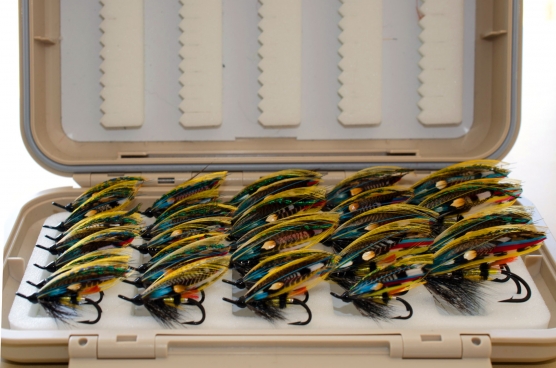
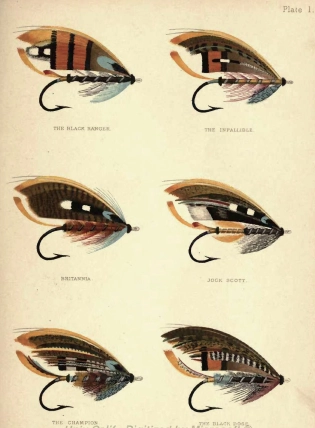

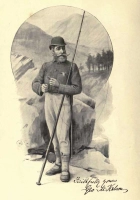

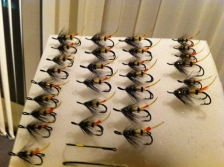
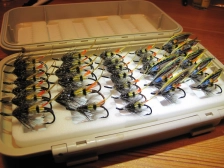
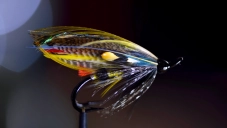
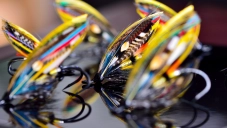
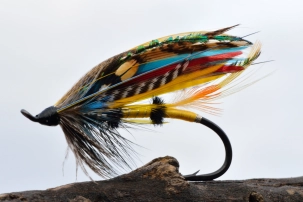

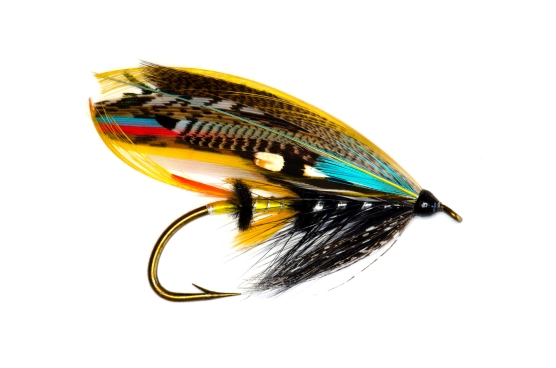
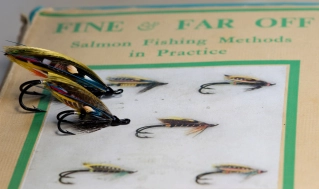

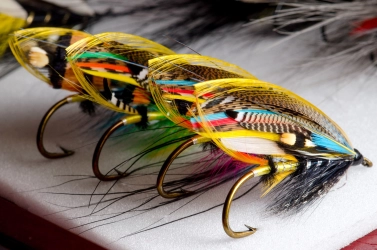
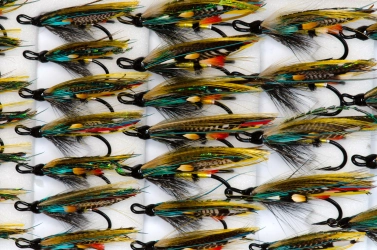
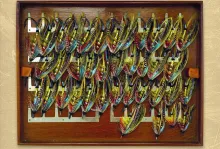
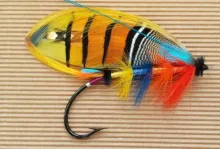
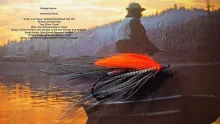
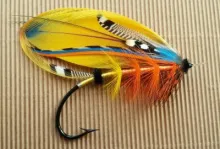
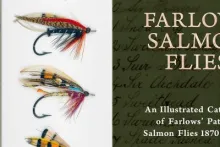
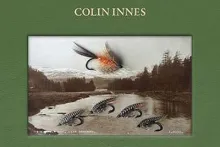

Putting the complexi
Putting the complexity of life aside, and the simplicity or complexity of tying a fishing fly in the forefront; Niels' Jock Scotts are beautiful to behold. I applaud him for using substitute materials for tying the Jock Scotts. If I was accomplished at tying full dressed salmon flies by the dozens, using substitute materials, and I lived in salmon country; I would definitely use them. The flies are not just eye candy for esthetic enjoyment; the purpose of their construction is to catch salmon.
Jep Martin, you did
Jep Martin, you did not get my point.
I meant that the joy often increases with effort.
We completely and 100% agree.
Arne
Arne,
I'm not sur
Arne,
I'm not sure I get your point... do you mean that Niels is a jerk? Or that he is making life complicated?
I would definitely oppose to both points of view.
Niels is certainly not a jerk, and yes, the flies are complicated, but compare Niels' flies to a particularly delicate and complex meal: sure you could cure your hunger with a piece of bread, but the joy of a well and elaborately cooked meal is so much bigger. Same thing for Niels fishing with Jock Scotts. A Wooly Bugger could maybe do the trick, but catching a salmon on a full dressed salmon fly is just a bigger thrill for some.
Martin
This perfectly match
This perfectly matches the German translation of the title of Hughes book "A jerk on one end" which is "Es ist so leicht, sich das Leben schwer zu machen". Basically it means " It is so easy to make life complicated".
The joy of fly tying is tying them.
The joy of fly fishing is fly fishing.
You need no excuse.
Just do it.